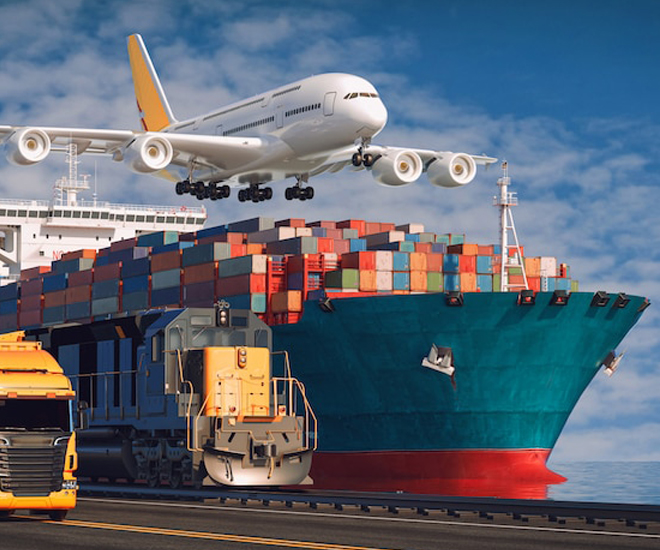Intermodal transportation, a term that was once considered an emerging trend in the logistics industry, has finally come of age. With the ever-increasing demand for efficient, sustainable, and cost-effective transportation solutions, intermodal transportation has become an indispensable part of the global supply chain network. The integration of multiple modes of transportation, such as ships, trains, trucks, and planes, has revolutionized the way goods are moved across vast distances, saving time, fuel, and resources. However, the true game-changer in the intermodal transportation sector is technology. In this blog post, we will delve into the critical role of technology in intermodal transportation and how it is transforming the way goods are moved.
What is Intermodal Transportation?
Intermodal transportation refers to the use of multiple modes of transportation to move goods from one location to another. It involves the transfer of goods from one mode of transportation to another, ensuring a seamless and efficient supply chain process. For instance, a shipment of containers might start on a ship, then be transferred to a train, and finally delivered by truck to its final destination. Intermodal transportation offers numerous benefits, including reduced transit times, lower fuel consumption, and lower emissions.
The Role of Technology in Intermodal Transportation
Technology has been instrumental in the growth and development of intermodal transportation. With the increasing use of digital platforms, innovative solutions, and real-time tracking systems, the industry has become more efficient, reliable, and customer-centric. Some of the key technologies that are transforming the intermodal transportation sector include:
- GPS and Real-Time Tracking: Global Positioning System (GPS) and real-time tracking enable shippers and logistics operators to monitor the movement of goods in real-time. This provides valuable insights into shipment status, allowing for proactive issue resolution, improved customer service, and enhanced supply chain visibility.
- Data Analytics: The vast amounts of data generated by intermodal transportation systems provide valuable insights into shipment patterns, transit times, and cargo flow. Data analytics helps logistics operators optimize their supply chains, reducing costs and improving efficiency.
- Digital Platforms: Digital platforms, such as online shipment management systems and e-commerce portals, have simplified the process of booking shipments, tracking orders, and managing supply chains. These platforms offer real-time information, instant quotes, and efficient communication between shippers, logistics operators, and customers.
- Automation and Robotics: Automation and robotics are being used to streamline intermodal transportation processes, such as cargo handling, container inspection, and documentation processing. These technologies reduce labor costs, improve accuracy, and enhance supply chain efficiency. Container houses
- Internet of Things (IoT): IoT sensors and devices are being integrated into intermodal transportation systems to monitor temperature, humidity, and other environmental factors. This ensures the safe transportation of perishable goods and reduces the risk of damage or spoilage.
- Artificial Intelligence (AI): AI and machine learning algorithms are being used to predict cargo demand, optimize shipment routing, and improve supply chain forecasting. These technologies enable logistics operators to make informed decisions, reducing transit times and improving efficiency.
- Blockchain Technology: Blockchain technology is being explored for use in intermodal transportation to enhance security, transparency, and trust in supply chain transactions. This technology can track shipments in real-time, ensuring that goods are accurately accounted for throughout the supply chain.
Case Study: Equip Intermodal
Equip Intermodal, a leading provider of intermodal transportation solutions, is at the forefront of technology adoption in the industry. Their innovative use of digital platforms, data analytics, and automation has transformed the way goods are moved across the United States. Some of the key technologies used by Equip Intermodal include:
- Online Shipment Management System: Equip Intermodal’s online system enables customers to track shipments, receive instant quotes, and manage their supply chains in real-time.
- Automated Cargo Handling: Equip Intermodal’s automated cargo handling system reduces labor costs and improves the accuracy of cargo processing.
- Real-Time Tracking: Equip Intermodal’s real-time tracking system provides customers with valuable insights into shipment status, enabling proactive issue resolution and improved customer service.
- Data Analytics: Equip Intermodal’s data analytics platform offers insights into shipment patterns, transit times, and cargo flow, enabling logistics operators to optimize their supply chains and reduce costs.
Benefits of Technology in Intermodal Transportation
The adoption of technology in intermodal transportation has numerous benefits, including:
- Improved Efficiency: Technology enables logistics operators to streamline supply chains, reducing transit times and improving efficiency.
- Enhanced Customer Service: Digital platforms, real-time tracking, and automated systems improve customer service, enabling proactive issue resolution and increased customer satisfaction.
- Lower Costs: Automation, data analytics, and real-time tracking reduce labor costs, improve accuracy, and enhance supply chain efficiency.
- Increased Transparency: Digital platforms and real-time tracking provide customers with valuable insights into shipment status, enabling proactive issue resolution and improved customer service.
- Sustainability: Technology enables logistics operators to optimize their supply chains, reducing fuel consumption, emissions, and other negative environmental impacts.
Conclusion
Technology has revolutionized the intermodal transportation sector, transforming the way goods are moved across vast distances. From GPS and real-time tracking to data analytics and automation, digital platforms, and blockchain technology, the industry has become more efficient, reliable, and customer-centric.
As the demand for efficient, sustainable, and cost-effective transportation solutions continues to grow, technology will play an increasingly important role in shaping the future of intermodal transportation.
Equip Intermodal is a shining example of the benefits of technology adoption in the intermodal transportation sector, and its innovative use of digital platforms, data analytics, and automation has transformed the way goods are moved in the United States.


